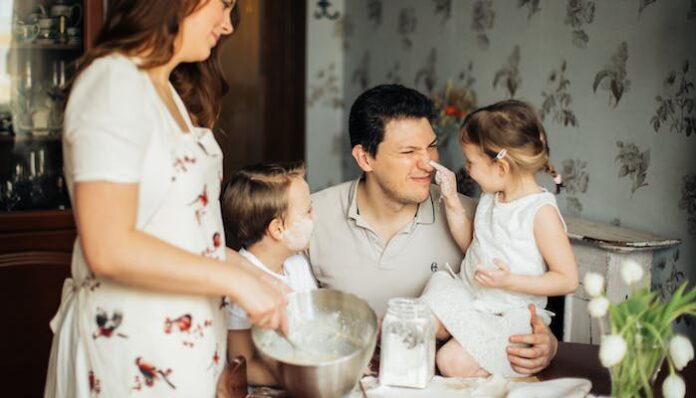
Navigating the world of parenting can be like steering a ship through uncharted waters, especially when you’re aiming to instill the values of mindfulness and minimalism in your kids. I’ve been on this journey myself, and it’s been a blend of challenges and joys. Minimalism isn’t just about fewer toys or less clutter; it’s about creating space for growth, learning, and meaningful experiences.
Mindfulness, on the other hand, is teaching our kids to live with intention and awareness. Together, these practices lay a foundation for a life rich in appreciation for the small things and a deep understanding of what truly matters, making them must-teach skills for kids.
1. Establish a Mindful Routine
Introducing mindfulness into your children’s daily life can be a game-changer. This begins with establishing a routine that nurtures inner calm and awareness. In our family, this takes the form of a ‘mindful morning’ ritual. We start each day with a short meditation or quiet reflection, encouraging even the youngest to participate. This practice isn’t about silence; it’s about tuning in to our thoughts and feelings. We talk about what we’re looking forward to in the day, share dreams from the night before, or simply sit in silence, observing the morning light. This routine has not only brought a sense of peace to our mornings but also created new family memories.
Mindfulness extends beyond these moments. During meals, we practice being present by turning off all screens and focusing on the flavors and textures of our food, and the company around us.
2. Create a Simplified Space
The environment we create for our children can significantly influence their development. A room filled with too many toys and distractions can lead to sensory overload and reduce the quality of their play. By contrast, a simplified space encourages creativity, focus, and calm.
In our home, we’ve adopted a minimalist approach to our children’s spaces. This doesn’t mean stark or bare rooms, but rather spaces that are thoughtfully arranged with items that encourage meaningful engagement. Each toy, book, and piece of furniture is selected with intention. For example, in my son’s room, we have a small selection of toys that rotate every few weeks. This not only keeps his interest alive but also reduces clutter. His room also features a small art station where he can express his creativity, and a cozy reading corner filled with a variety of books.
3. Choose Montessori Baby Toys
Embracing minimalism in parenting also means being selective about the toys we introduce to our children. Cute Montessori baby toys are an excellent embodiment of this principle. These toys, crafted from natural materials, are simple in design yet profound in their impact on child development. They foster an environment where children can explore, learn, and grow at their own pace.
These toys are designed to enhance fine motor skills, problem-solving abilities, and sensory experiences. Unlike the usual flashy, noise-making toys, these encourage prolonged, independent play and exploration. It was remarkable to see how my child was engrossed in simple activities like fitting shapes into a puzzle or exploring a wooden sensory bin. These toys not only declutter the play space but also offer a clutter-free way for the child’s mind to focus and learn.
4. Practice Gratitude and Giving
In a minimalist lifestyle, gratitude and generosity play pivotal roles. In our family, we have a tradition where, before birthdays and major holidays, we sit together and choose toys and clothes to donate. This practice has become a cherished routine that my children look forward to. Through this exercise, my children have learned to value their possessions and understand the importance of giving to those less fortunate. It’s a practical way of demonstrating how letting go of physical items can bring joy to others.
Furthermore, this practice of decluttering has made them more mindful of their possessions and the transient nature of material things. They’ve learned to cherish experiences and relationships over possessions.
5. Lead by Example
The most influential teaching method is leading by example. Children are astute observers and imitators of adult behavior. By practicing mindfulness and minimalism ourselves, we set a powerful example for our children. This could mean making conscious choices about purchases, maintaining a clutter-free and organized home, or prioritizing experiences over material possessions. In our home, we make an effort to discuss why we make certain choices, like opting for a family outing instead of buying new toys or choosing to repair an item rather than replacing it.
These discussions have opened up opportunities for teaching valuable life lessons about sustainability, resourcefulness, and the importance of non-material aspects of life. My children have seen how a minimalist approach leads to a more focused, fulfilling lifestyle, and this understanding has gradually seeped into their own choices and behaviors.
Mindfulness and minimalism in parenting are not about strict rules or denying pleasures; they’re about making conscious choices that enhance our children’s well-being and development. By establishing mindful routines and creating simplified spaces, we not only provide our children with the tools to navigate their world with awareness and creativity but also instill in them values that will serve them well throughout their lives.
Photo by Elina Fairytale on Pexels


















